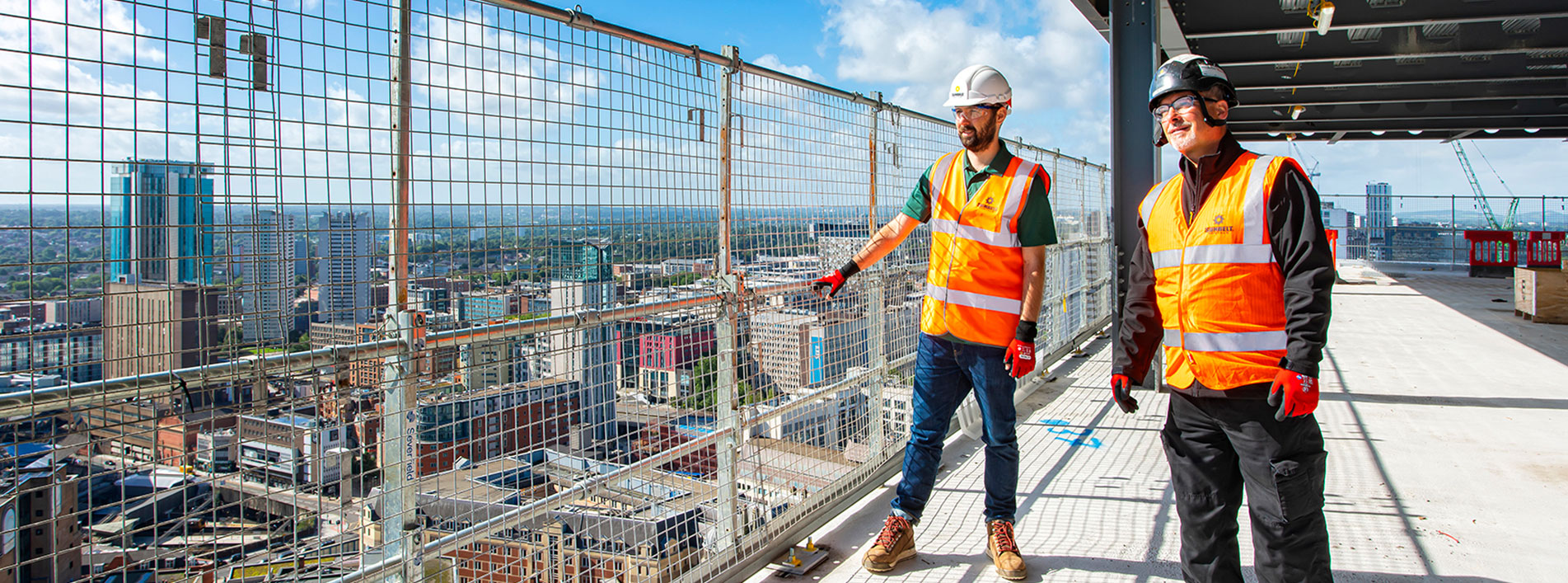Delivery, Installation and Maintenance
Delivery
Delivery of our rental hoists is typically made by one of our rigid lorries fitted with a palfinger lorry mounted crane, equipped with lifting accessories and driven by a trained driver/operator.
All deliveries of our hoist equipment to site are planned in advance to ensure minimum site disruption and inconvenience. Our delivery fleet of 8 wheel construction chassis vehicles can self-offload and position the hoist base assembly at up to 12 metres of the vehicle, depending on site conditions.
Our FORS registered HGV fleet is compliant to major project standards and fitted with the latest emissions controls, allowing deliveries anywhere in the UK.
Some of our larger hoist cage / base assemblies exceed 2.9 metres width and travel as ‘abnormal loads’. When this is required, we will register the abnormal load movement and travel in accordance to the requirements of the movement order. Within the Metropolitan Police area, where the movement times of the vehicle are restricted we will advise sites of the early delivery time to ensure that it is open, ready to receive the delivery.
Deliveries are met by our installation engineers and supervisors to guide the vehicle to the correct location and position the hoist according to prepared installation drawings. This will follow site indicated gridlines, where available.
Toolbox talks are carried out with the hiab operator and installation engineers to ensure all members of the team understand what is required and all safety matters are explained so the necessary control measures are in place prior to offloading and placing the delivery.
All mast sections, superstructure and ancillary items are offloaded adjacent to the installation site to minimise manual handling during the installation.
Where site tower cranes are available to place the hoist away from the access roads or for all slipform hoist installations, our installation engineers will liaise with the site banksman to ensure that the hoist equipment is slung correctly and placed according to the installation drawings and site preparation.
Installation
Installation of your own hoists is carried out by our experienced and competent site engineers from supplied drawings and site information. All work is carried out efficiently and at competitive rates
The safety of our installation team and that of everyone on site is of utmost priority, so we will plan and manage the installation in detail.
Before the installation takes place, our site supervisor will visit site and inspect the installation area, access routes and general site conditions. This information is fed into our systems to enable accurate installation drawings, method statements and risk assessments to be produced by trained, competent professionals.
The hoist mast height is extended either by using a ‘self-erect’ jib and winch, or byusing a site tower crane, reducing working at height risks.
The mast stick is secured to the building / structure through tie assemblies, configured to suit the hoist type and fixings into or onto the structure. Where hoists are installed onto new buildings, we encourage the use of tie embedment sockets connected to the slab rebar before the slab concrete is poured, to eliminate the need to drill the floor slab and fit mechanical anchors.
Due to the nature of our work it is essential that control measures are in place while working at height. All installation engineers are trained to work at height and provided with the correct Work at Height PPE including full body harnesses, fall arrest and work positioning lanyards, which are inspected in line with Work at Height Regulations.
Maintenance
Maintenance and repair of your own rack and pinion lifts or hoists is carried out by our service and maintenance engineers at an agreed schedule and rate.
To ensure that your rack and pinion lift/hoist runs at optimal efficiency and safety, it is important to follow the manufacturer’s maintenance schedule and have all works carried out by competent, trained engineers.
Our maintenance engineers are trained in all aspects of rack and pinion technology and can maintain, repair and carry out mandatory testing of your own equipment to an agreed schedule. All safety critical replacement parts are sourced from the manufacturer and fitted on site to best practice standards.

 Open your account online within 24 hours
Open your account online within 24 hours  Nationwide, next day delivery available
Nationwide, next day delivery available  Over 200 locations near you
Over 200 locations near you 